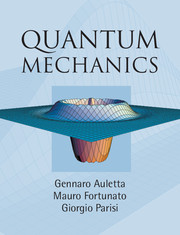Book contents
- Frontmatter
- Contents
- List of figures
- List of tables
- List of definitions, principles, etc.
- List of boxes
- List of symbols
- List of abbreviations
- Introduction
- Part I Basic features of quantum mechanics
- Part II More advanced topics
- Part III Matter and light
- Part IV Quantum information: state and correlations
- 14 Quantum theory of open systems
- 15 State measurement in quantum mechanics
- 16 Entanglement: non-separability
- 17 Entanglement: quantum information and computation
- Bibliography
- Author index
- Subject index
15 - State measurement in quantum mechanics
Published online by Cambridge University Press: 05 June 2012
- Frontmatter
- Contents
- List of figures
- List of tables
- List of definitions, principles, etc.
- List of boxes
- List of symbols
- List of abbreviations
- Introduction
- Part I Basic features of quantum mechanics
- Part II More advanced topics
- Part III Matter and light
- Part IV Quantum information: state and correlations
- 14 Quantum theory of open systems
- 15 State measurement in quantum mechanics
- 16 Entanglement: non-separability
- 17 Entanglement: quantum information and computation
- Bibliography
- Author index
- Subject index
Summary
In classical mechanics, as we know, all observables commute with each other and therefore belong to the same “commuting set.” This means that – in principle – we can measure all observables simultaneously. Then, the state manifests itself as a collection of properties (of values of observables) (see Sec. 1.1), and as such it is observable. On the other hand, quantum-mechanical observables may not commute (see Subsec. 2.1.5). As a consequence, the state is not just a collection of observable values (see also Sec. 2.3) so that we may ask ourselves whether it is observable or not, and therefore raise the following question: What is the nature of the wave function? Is it simply a mathematical tool, i.e. does it only represent the sum of all that we can know about a system? Or does it have an ontological status? Since the early days of quantum mechanics, this question has been very popular. As a first attempt, de Broglie tried to interpret the wave function as describing, in classical terms, a wave field that envelopes a classical particle (see also Subsec. 16.3.2). This theory should predict the existence of empty waves, but several experiments have shown negative results (see also the end of Sec. 9.6). More recently, many physicists have tried to propose some methods in order to measure the wave function. Here we shortly report on some of these proposals and discuss to what extent the quantum state can be measured.
- Type
- Chapter
- Information
- Quantum Mechanics , pp. 544 - 566Publisher: Cambridge University PressPrint publication year: 2009

